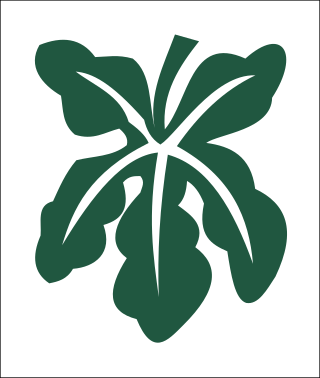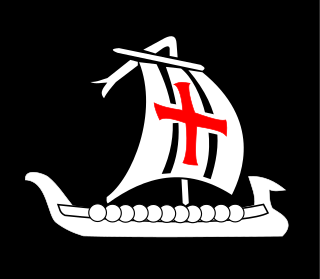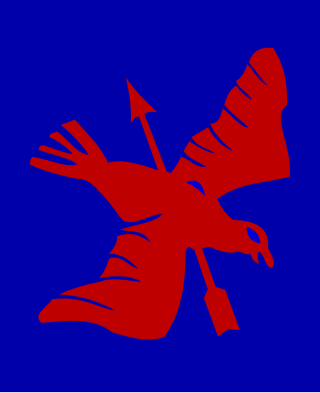| Southern Command | |
|---|---|
 | |
| Active | 1793–1972 |
| Country | |
| Branch | |
| Type | Command |
| Size | 62,000 troops |
| Garrison/HQ | Portsmouth (1793–1901) Tidworth Camp (1901–1949) Fugglestone St Peter (1949–1972) |
Southern Command was a Command of the British Army.
| Southern Command | |
|---|---|
 | |
| Active | 1793–1972 |
| Country | |
| Branch | |
| Type | Command |
| Size | 62,000 troops |
| Garrison/HQ | Portsmouth (1793–1901) Tidworth Camp (1901–1949) Fugglestone St Peter (1949–1972) |
Southern Command was a Command of the British Army.





Great Britain was divided into military districts on the outbreak of war with France in 1793. [1] By the 1830s the command included the counties of Kent and Sussex (the original Southern District during the Napoleonic Wars) as well as Bedfordshire, Northamptonshire, Oxfordshire and Buckinghamshire (the original South Inland District) and Hampshire, Wiltshire and Dorset (the original South-West District) and Gloucestershire, Worcestershire and Herefordshire (the original Severn District). [2]
The role of South-West District Commander, which was doubled hatted with that of Lieutenant-Governor of Portsmouth, was originally based at Government House in Grand Parade in Portsmouth. [3] This building became very dilapidated and a new Government House was established in the High Street in Portsmouth in 1826. [4] [5] In January 1876 a ‘Mobilization Scheme for the forces in Great Britain and Ireland’ was published, with the ‘Active Army’ divided into eight army corps based on the District Commands. 5th Corps was to be formed within Southern Command, based at Salisbury. This scheme disappeared in 1881, when the districts were retitled ‘District Commands. [6] A third Government House, which was built in red brick on Cambridge Road in Portsmouth, was completed in 1882. [3]
The 1901 Army Estimates introduced by St John Brodrick allowed for six army corps based on six regional commands. As outlined in a paper published in 1903, II Corps was to be formed in a reconstituted Southern Command, with HQ at Salisbury Plain. [7] Lieutenant General Sir Evelyn Wood was appointed acting General Officer Commanding-in-Chief (GOCinC) of Southern Command on 1 October 1901. [8] Southern Command was initially based at Tidworth Camp. [9]
At the end of 1914, Lieutenant General Sir Horace Smith-Dorrien, the GOCinC, left Southern Command to form II Corps in France, and Lieutenant General William Campbell was placed in command. [10] On 8 March 1916, Lieutenant-General Sir Henry Sclater, took charge of Southern Command. Sclater served as GOC-in-C there until May 1919. [11]
In 1939 regular troops reporting to Southern Command included 1st Armoured Division, based at Andover, and 3rd Infantry Division, based at Bulford. [12] Other Regular Troops reporting to Southern Command at war time included: [12]
The command moved to Erskine Barracks near Fugglestone St Peter in Wiltshire in 1949. [13] [14] From 1955 to 1961 it included the TA 30th Anti-Aircraft Brigade with its headquarters at Edenbridge in Kent. [15]
In 1968, a new command (Army Strategic Command) was formed at Erskine Barracks, largely staffed by the Southern Command personnel already based there. At the same time a new HQ Southern Command was established at Hounslow Barracks, into which was merged HQ Eastern Command (which was thence disestablished as a separate command). [16] This new, expanded Southern Command, with geographical responsibility across the old Eastern and Southern command areas, was itself merged into HQ UK Land Forces (HQ UKLF) in 1972. [17]
During the Second World War and after, Southern Command, in common with other UK Commands, used its formation sign as a badge, (or flash) on uniforms. The HQ sign itself (see top of this article) with its horizontal red, black, red background colouring indicated an army level command, on which were five stars of the Southern Cross. Uniquely in Southern Command the background colour of the shield, and occasionally the stars, was changed to show the colours of the service corps of the personnel, other commands used their formation sign with an arm of service stripe (1⁄4 inch (0.64 cm) thick) below it. The various designs and changes for visibility or similarity are shown below. [18]
GOCs have included: [19] [20] [21]
General Officer Commanding South-West District
General Officer Commanding Southern District
Commander Second Army Corps
In 1901 Second Army Corps was formed, with South East District at Dover, Southern District at Portsmouth and Western District at Devonport under command.
General Officer Commanding Southern Command

I Corps was an army corps in existence as an active formation in the British Army for most of the 80 years from its creation in the First World War until the end of the Cold War, longer than any other corps. It had a short-lived precursor during the Waterloo Campaign. It served as the operational component of the British Army of the Rhine during the Cold War, and was tasked with defending West Germany.

The II Corps was an army corps of the British Army formed in both the First World War and the Second World War. There had also been a short-lived II Corps during the Waterloo Campaign.

III Corps was an army corps of the British Army formed in both the First World War and the Second World War.

1st Army Group Royal Artillery was a brigade-sized formation organised by Britain's Royal Artillery during World War II to command medium and heavy guns. It served in the final stages of the Tunisian Campaign and throughout the Italian Campaign. It reformed in the Territorial Army in the 1950s to command air defence units.
The Malaya Command was a formation of the British Army formed in the 1920s for the coordination of the defences of British Malaya, which comprised the Straits Settlements, the Federated Malay States and the Unfederated Malay States. It consisted mainly of small garrison forces in Kuala Lumpur, Penang, Taiping, Seremban and Singapore.

X Corps was a corps of the British Army that served in the First World War on the Western Front before being disbanded in 1919. The corps was re-formed in 1942 during the Second World War and saw service in the North African Campaign and the Italian Campaign where it came under command of the US Fifth Army and the British Eighth Army.

HQ Northern Ireland was the formation responsible for the British Army in and around Northern Ireland. It was established in 1922 and disbanded, replaced by a brigade-level Army Reserve formation, 38 (Irish) Brigade, in 2009.

V Corps was an army corps of the British Army that saw service in both the First and the Second World Wars. It was first organised in February 1915 and fought through the First World War on the Western front. It was recreated in June 1940, during the Second World War and was substantially reorganised in 1942 for participation in Operation Torch. It fought through the Tunisia Campaign and later the Italian Campaign.

XII Corps was an army corps of the British Army that fought in the First and Second World Wars. In the First World War, it formed part of the British Salonika Force on the Macedonian front. In the Second World War, it formed part of the British Second Army during Operation Overlord and the subsequent North-West Europe Campaign of 1944-46.

The Bombay Army was the army of the Bombay Presidency, one of the three presidencies of British India.

Northern Command was a Home Command of the British Army from 1793 to 1889 and from 1905 to 1972.

Eastern Command was a Command of the British Army.

Aldershot Command was a Home Command of the British Army.
The Diamond Jubilee Honours for the British Empire were announced on 22 June 1897 to celebrate the Diamond Jubilee of Queen Victoria on 20 June 1897.
The Golden Jubilee Honours for the British Empire were announced on 21 June 1887 to celebrate the Golden Jubilee of Queen Victoria on 20 June 1887.
The 1906 Birthday Honours for the British Empire were announced on 29 June, to celebrate the birthday of Edward VII on 9 November.
The 1918 Birthday Honours were appointments by King George V to various orders and honours to reward and highlight good works by citizens of the British Empire. The appointments were made to celebrate the official birthday of The King, 3 June and were published in The London Gazette on the same day, followed by a supplement.
The 1917 New Year Honours were appointments by King George V to various orders and honours to reward and highlight good works by citizens of the British Empire. The appointments were published in several editions of The London Gazette in January and February.
The 1919 New Year Honours were appointments by King George V to various orders and honours to reward and highlight good works by citizens of the British Empire. The appointments were published in The London Gazette and The Times in January 1919.

I Anti-Aircraft Corps was a high-level formation of Britain's Anti-Aircraft Command from 1940 to 1942. It defended Southern England and Wales during the Blitz and the middle years of the Second World War.